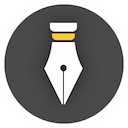An Introduction to Markdown
Markdown is a lightweight "markup language". It has many advantages and is widely used by more and more writing enthusiasts and writers.
This article is an introduction to the most commonly used syntax of Markdown, and aims to provide an instruction for users to quickly get started with Markdown.
Header
In Markdown, text starting with # at the beginning of a line is defined as a heading, such as:
# Header 1
## Header 2
### Header 3
#### Header 4
##### Header 5
###### Header 6
Example:
Header 1
Header 2
Header 3
Header 4
Header 5
Header 6
The header is up to six levels. It is recommended to add a space after #.
List
In Markdown, the list display only needs to add - or * before the text to become an unordered list, and add numbers such as 1., 2., 3. to become a list Sequence listing. Likewise, it is recommended to add a space between the list symbol and the text.
Unordered list:
- Item 1
- Item 2
- Item 3
Example:
- Item 1
- Item 2
- Item 3
Ordered list:
1. Item 1
2. Item 2
3. Item 3
Example:
- Item 1
- Item 2
- Item 3
Quote
If you want to indicate that a piece of text is a quote, just precede it with a greater-than sign > . If you have used Email or BBS in the early years, you must be familiar with this syntax.
> This is a quote
Example:
This is a quote
Quotes can contain multiple lines:
This is a quote 1
This is a quote 2
This is a quote 3
Hyperlink
To insert a hyperlink in a document, you can use the following syntax:
[link text](URL address)
Example:
[WonderPen](https://www.tominlab.com/wonderpen) will be rendered to WonderPen.
Image
The syntax for inserting a picture is similar to the syntax for inserting a link, except that there is an exclamation mark ! in front of it.

Bold and Italics
Text enclosed with ** is rendered bold, and text enclosed with * is rendered italic. as follows:
**bold**
*italic*
Example:
**bold** → bold
*italic* → italic
Table
The syntax of the table is relatively complicated. Generally speaking, the table is divided into three parts: Header, Alignment, and Table Content. For example the following example:
|Left Align|Center Align|Right Align|
|---|:---:|---:|
|AAA|abc|10|
|BBB|33|5|
Will be rendered as the following table:
| Left Align | Center Align | Right Align |
|---|---|---|
| AAA | abc | 10 |
| BBB | 33 | 5 |
Dividing Line
If you want to insert a dividing line on the page, you can start a new line and enter three * or -, as follows:
***
Or
---
Example:
*** will be rendered as:
--- will be rendered as:
Summary
At this point, you have learned the most common syntax of Markdown, and you can start using Markdown for daily writing. To learn more, continue to read more about it.
